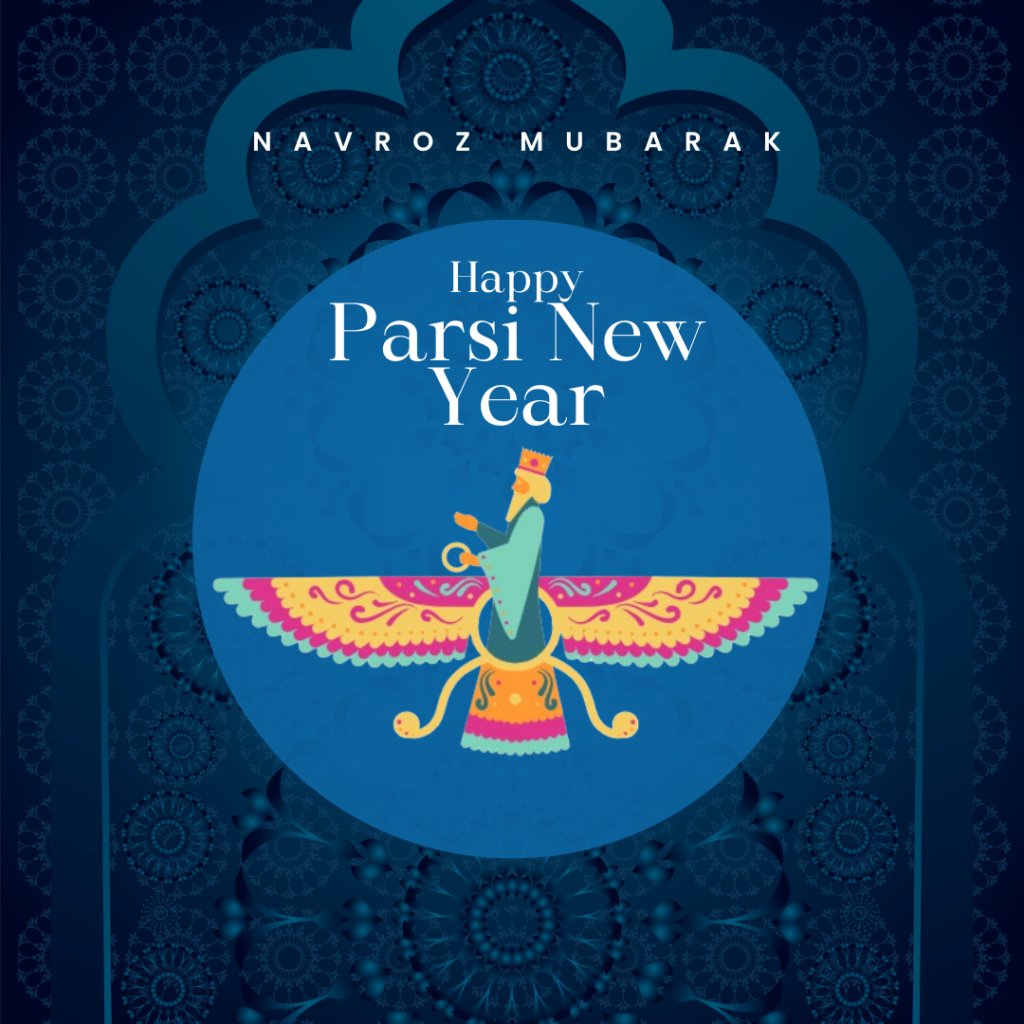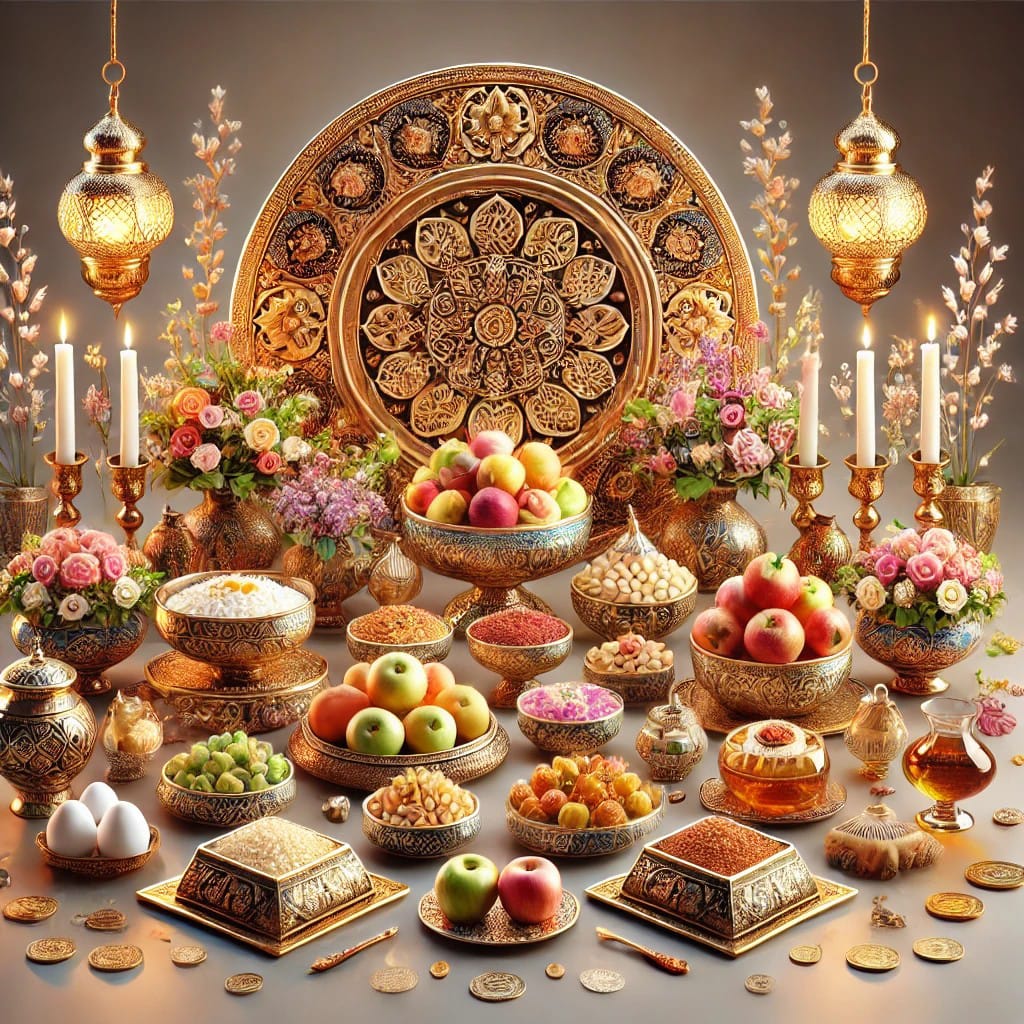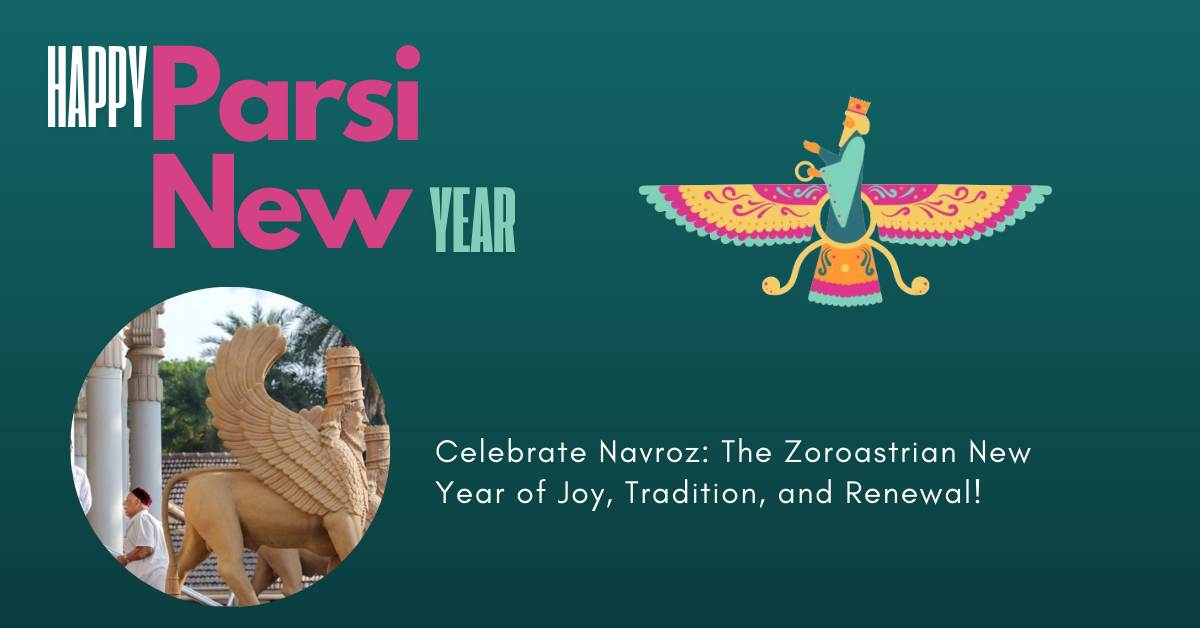Table of Contents
The Ancient Legacy of Zoroastrianism: A Journey Through Time
Zoroastrianism, one of the world’s oldest monotheistic faiths, traces its origins to ancient Persia, around 1500 BCE. Founded by the revered prophet Zarathustra (Zoroaster), this rich and profound religion centers on the worship of Ahura Mazda, the deity representing light, wisdom, and truth. Zoroastrians believe in the eternal struggle between good and evil, urging humanity to contribute to the triumph of good by embracing Good Thoughts, Good Words, and Good Deeds.
Though Zoroastrianism flourished under the Persian Empire, the rise of Islam led to persecution, and many Zoroastrians sought refuge in India, where they are now known as Parsis. This community, though small, has left an indelible mark on India’s cultural and social fabric.
Navroz: A Celebration of Life, Light, and New Beginnings
Navroz, also referred to as Nowruz or Pateti, is the Zoroastrian New Year, marking the arrival of spring and the vernal equinox. Derived from Persian, “Nav” means new, and “Roz” means day, signifying a New Day.

For the Zoroastrians, this day is not just the beginning of a new calendar year but also a renewal of spirit, where nature and humanity come together in a cosmic embrace of harmony and growth.
Though globally observed on March 21, Indian Parsis often celebrate Navroz later in July or August, blending their cultural heritage with the Indian landscape.
Customs, Traditions, and the Vibrant Culture of Navroz
Navroz is a festival deeply embedded in rituals, customs, and age-old traditions. The day is infused with a powerful spiritual significance and echoes the values of purity, gratitude, and the eternal balance between good and evil.
The Cleansing Ritual: Welcoming Prosperity and Driving Away Negativity
Navroz preparations begin with an intense spring cleaning of homes, a symbolic gesture to sweep away the remnants of the old year, making space for prosperity, positivity, and new energies. Homes are scrubbed, redecorated, and adorned with fresh flowers, lamps, and traditional Parsi motifs. The act of cleaning is not just a physical task—it is a spiritual cleansing, preparing the home and soul for the blessings of the New Year.
The Haft-Seen: The Sacred Symbols of Navroz
A beautifully decorated Haft-Seen table forms the heart of Navroz festivities. This sacred arrangement consists of seven symbolic items, each starting with the letter ‘S’ in Persian, representing different aspects of life, nature, and spiritual growth:
- Sabzeh (sprouted grains): Symbol of new life and regeneration.
- Seer (garlic): Representing health and protection.
- Sib (apple): A symbol of beauty, health, and vitality.
- Samanu (sweet pudding): A reminder of power, strength, and endurance.
- Senjed (dried fruit of the oleaster tree): Signifying love and respect.
- Serkeh (vinegar): A metaphor for patience and wisdom.
- Sumac (spice): Symbolizing the dawn and the victory of light over darkness.

Other items, such as a mirror, candles, goldfish, eggs, and coins, are added to symbolize self-reflection, enlightenment, life, fertility, and wealth.
Zoroastrian Rituals: A Sacred Beginning to Navroz
On Navroz morning, Zoroastrians don new clothes and visit the fire temple—an emblem of purity, where a sacred flame eternally burns as a reminder of Ahura Mazda’s divine light. Special prayers are offered, and priests recite verses from the Avesta, asking for blessings for health, peace, and prosperity. Offerings to the temple are made with great devotion, emphasizing the importance of family, community, and moral integrity.
Parsi Feasts: A Culinary Celebration of Unity and Tradition
Navroz feasts are a feast for both the palate and the soul. Parsi families gather to share an elaborate meal, an important tradition that underscores their values of hospitality, love, and togetherness. The spread includes delicacies like:
- Patra ni Machhi: Fish steamed in banana leaves, a dish as flavorful as it is symbolic of prosperity.
- Sali Boti: Mutton curry with crispy potato straws, a blend of Persian and Indian flavors.
- Dhansak: A signature Parsi dish made with lentils, vegetables, and meat, served with caramelized rice.
- Ravo and Falooda: Traditional sweet dishes that bring a delightful end to the meal, signifying the sweetness of the year ahead.
The Legacy of the Tata Family: Zoroastrians Who Shaped India and the World
The Zoroastrian community, though small in number, has gifted India and the world with some of its most visionary leaders and philanthropists. Two names that stand tall in this legacy are Jamshedji Tata and Ratan Tata, whose contributions have not only uplifted the nation but have left a profound impact on humanity at large.
For Indians, the Tata family is not just a corporate entity; they are a beacon of hope, resilience, and compassion. They embody the essence of Navroz’s spirit of renewal, continuously working towards building a brighter, more prosperous future for all. Their legacy reminds us that, with the right values and a heart full of generosity, even the smallest community can change the course of history for a nation and the world.
In every step they take, the Tatas uphold the true spirit of Zoroastrianism—dedication to the welfare of others and unwavering integrity in the face of challenges. Through their lives and work, they inspire a sense of national pride and remind us of the power of unity and service.
The Spiritual Significance of Navroz: Renewal, Reflection, and Rebirth
Navroz is far more than a celebration—it is a time for spiritual renewal, a period where Zoroastrians reflect on the deeper values of their faith and reconnect with nature’s cyclical rhythm. The festival symbolizes the balance between light and darkness, good and evil, and encourages individuals to focus on good thoughts, good words, and good deeds for the year ahead.
Zoroastrians believe that Navroz is a cosmic moment of renewal, where nature, humanity, and the divine come together to begin afresh. The balance of the equinox, where day and night are equal, is a reflection of the cosmic balance that is central to Zoroastrian teachings.
The Haft-Seen table, religious prayers, and family gatherings serve as reminders of the eternal cycle of life, emphasizing the importance of gratitude, generosity, and compassion. It is also a time to honor ancestors, with prayers recited in memory of loved ones, further connecting the present to the past.
Navroz in the Modern World: Preserving Tradition in a Changing Time
Though the Zoroastrian community is small, particularly in India, where the Parsis are concentrated in Mumbai and Gujarat, the spirit of Navroz remains vibrant. Modern-day celebrations have retained the core traditions while embracing contemporary social dynamics. In Mumbai, Navroz is marked with public holidays, community gatherings, and cultural programs that introduce the broader public to Zoroastrian heritage.
Parsis today invite non-Parsi friends to share in the celebrations, highlighting the spirit of inclusivity and openness that characterizes their way of life. While rooted in ancient tradition, Navroz continues to evolve, making it a festival of unity, friendship, and collective celebration.
Conclusion: Navroz—A Festival of Eternal Hope and New Beginnings
Navroz remains a festival that beautifully encapsulates the essence of Zoroastrianism—its celebration of light, truth, and the triumph of good over evil. As Zoroastrians gather to mark the New Year, they reaffirm their commitment to living a life of righteousness and moral clarity, guided by the timeless values of their faith.
For the global Zoroastrian community, Navroz is a beacon of hope and renewal, serving as a reminder that despite life’s challenges, each year brings with it the opportunity to start anew. It is a festival that transcends time and borders, offering everyone the chance to reflect, renew, and rejoice in the blessings of life.
Frequently Asked Questions (FAQ)
Q1: What does the word Navroz mean, and why is it significant?
“Navroz” comes from the Persian words “Nav” (new) and “Roz” (day), meaning New Day. It is significant as it marks the Zoroastrian New Year and symbolizes the arrival of spring, new beginnings, and spiritual renewal.
Q2: Why is the Haft-Seen table important in Navroz celebrations?
The Haft-Seen table consists of seven symbolic items that represent life, nature, and moral values. Each item—whether it’s Sabzeh for rebirth or Serkeh for wisdom—adds depth to the celebration, reminding Zoroastrians of their connection to nature and the cosmic order.
Q3: How do Zoroastrians celebrate Navroz in India?
In India, Parsis visit fire temples for prayers, wear new clothes, clean their homes, and prepare lavish feasts. They also set up the Haft-Seen table and gather with family and friends to celebrate the New Year, reflecting on the values of renewal and gratitude.
Q4: What makes Parsi cuisine unique during Navroz?
Parsi cuisine blends Persian and Indian flavors, creating a unique array of dishes such as Patra ni Machhi and Dhansak. The culinary traditions during Navroz reflect the community’s rich heritage and the importance of sharing meals in unity.
Q5: What is the spiritual significance of the Navroz festival?
Navroz is a time for spiritual renewal and reflection. It represents the balance of good and evil, light and darkness, encouraging individuals to embrace Zoroastrian values of truth, righteousness, and moral integrity.
This timeless celebration serves as a profound reminder that no matter how small the community, their culture, faith, and traditions continue to flourish in a rapidly changing world.

Normally I don’t read post on blogs, but I wish to say that this write-up very compelled me to check out and do so! Your writing taste has been amazed me. Thank you, very great article.
I loved as much as you’ll receive carried out right here. The sketch is tasteful, your authored material stylish.
I like what you guys are up also. Such smart work and reporting! Keep up the excellent works guys I’ve incorporated you guys to my blogroll. I think it will improve the value of my web site 🙂
Usually I do not read article on blogs however I would like to say that this writeup very compelled me to take a look at and do it Your writing style has been amazed me Thank you very nice articleHABANERO88